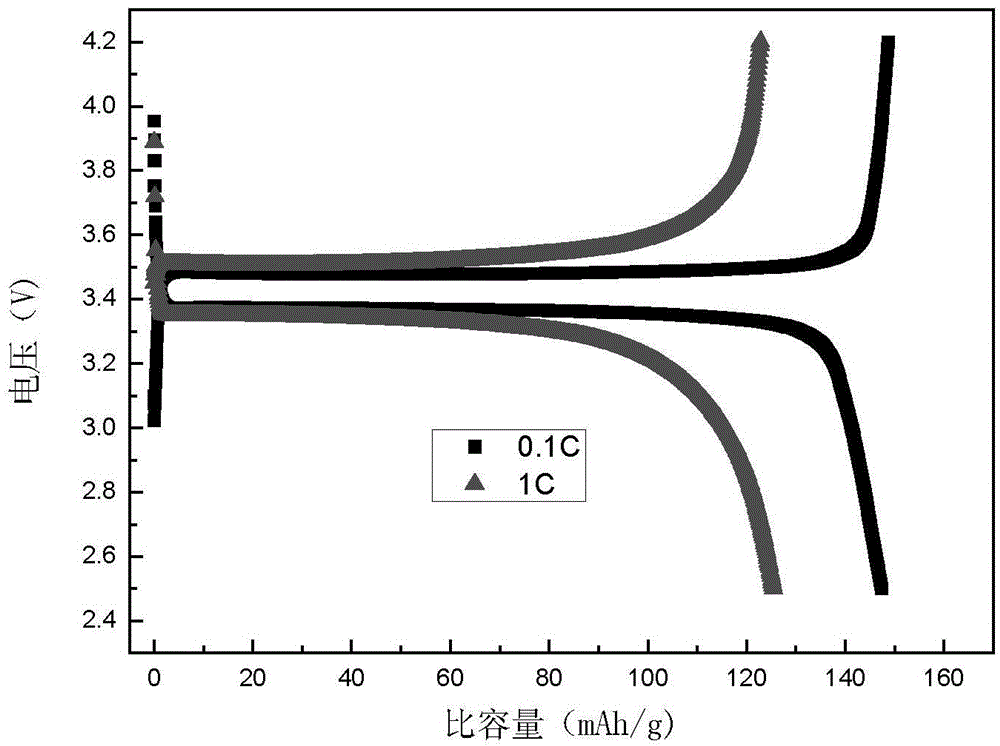Method for recycling battery-grade iron phosphate in lithium iron phosphate battery and preparing lithium iron phosphate positive material by utilizing waste lithium ion phosphate battery
A technology of lithium iron phosphate battery and lithium iron phosphate, which is applied in battery recycling, recycling technology, recycling by waste collectors, etc., can solve the problems of low purity of elements or substances, re-preparation of battery positive electrode materials, etc., and achieve good dispersion, Improve the use value, the effect of good reversibility
- Summary
- Abstract
- Description
- Claims
- Application Information
AI Technical Summary
Problems solved by technology
Method used
Image
Examples
specific Embodiment approach 1
[0030] Specific embodiment one: the method for reclaiming battery-grade iron phosphate in the lithium iron phosphate battery of this embodiment is carried out according to the following steps:
[0031] 1. Remove the residual electricity in the waste lithium iron phosphate battery, take out the battery cell to separate the positive electrode, negative electrode and diaphragm, crush the positive electrode sheet, then perform heat treatment, and then oscillate and sieve, get pure aluminum on the sieve, and get it under the sieve mixed powder;
[0032] 2. Dissolve the mixed powder obtained under the sieve in step 1 with an acid solution;
[0033] Three, add tensio-active agent in the acid solution of step 2;
[0034] 4. Add lye to the solution added with surfactant in step 3 to adjust the pH value to 2, then filter, wash and dry the precipitate to obtain battery-grade iron phosphate.
[0035] In the first step of this embodiment, the heat treatment can remove the binder on the p...
specific Embodiment approach 2
[0037] Embodiment 2: The differences between this embodiment and Embodiment 1 are: in step 1, the heat treatment temperature is 450-500° C., and the heat treatment time is 1-2 hours. Other steps and parameters are the same as those in Embodiment 1.
specific Embodiment approach 3
[0038] Embodiment 3: The difference between this embodiment and Embodiment 1 or 2 is that the acid solution in step 2 is 2-2.5 mol / L sulfuric acid solution or 2-2.5 mol / L hydrochloric acid solution. Other steps and parameters are the same as those in Embodiment 1 or 2.
PUM
 Login to View More
Login to View More Abstract
Description
Claims
Application Information
 Login to View More
Login to View More - R&D
- Intellectual Property
- Life Sciences
- Materials
- Tech Scout
- Unparalleled Data Quality
- Higher Quality Content
- 60% Fewer Hallucinations
Browse by: Latest US Patents, China's latest patents, Technical Efficacy Thesaurus, Application Domain, Technology Topic, Popular Technical Reports.
© 2025 PatSnap. All rights reserved.Legal|Privacy policy|Modern Slavery Act Transparency Statement|Sitemap|About US| Contact US: help@patsnap.com



